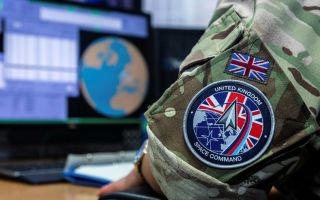Navy
US And UK Join Forces To Test Unmanned Minehunters
Royal Navy minehunters and their US counterparts have surveyed the seabed for mines more than 200 nautical miles away, using a range of autonomous and unmanned systems.
The Task Group, working from a base in Bahrain, was made up of specialist minehunting ships HMS Shoreham and Bangor, the USS Devestator and Gladiator - as well as Royal Fleet Auxiliary Cardigan Bay.
RFA Cardigan Bay ensured the ships were supplied with fuel, water and stores while on patrol.
Technology and small boats launched from RFA Cardigan Bay were used
This meant the team could survey hundreds of miles of seabed at a time, which allowed them to detect what was already there so that those objects can be discounted in future if mining is ever suspected in the area.
The Task Group’s commander, Commander Paul Ottewell of the Royal Navy, said:
“Though our mine countermeasure vessels (MCMVs) and embarked expeditionary units are all experts in their own fields, we must be able to operate effectively together, so that we are collectively greater than the sum of our parts."
We can then deliver a single, coherent and consistent message of reassurance to the International Shipping industry who use these important routes on a daily basis.”
Another capability was the US Navy’s experimental Mine Hunting Unit's Unmanned Surface Vehicle - fitted with a mine-hunting sonar to detect underwater objects
The information brought back from the ships built up a very detailed picture of the seabed on the key shipping routes through a number of key strategic areas in the Gulf.
This was achieved through a combination of high-definition sonar, the latest autonomous surface and underwater vehicles, remotely-operated vehicles and highly-trained mine clearance divers.
These were from the Royal Navy’s Fleet Diving Unit 3 (FDU3), usually based at Portsmouth, and a US Navy Expeditionary MCM Company and was the first time they had worked together on operations.
Both are made up of underwater explosive ordnance disposal specialists whose main role is to spot suspicious underwater contacts and then make them safe.
The combined dive teams use remotely operated vehicles fitted with their own sonars, meaning they can identify and dispose of ordnance from afar as well – at much less risk to themselves or their colleagues. Commander Ottewell said:
“As new generations of off-board systems become operational, we are increasingly able to find and destroy sea mines at deeper depths, more rapidly and with less risk to human life."
"Autonomous and semi-autonomous systems are rapidly coming of age, complementing the capability of our world-class MCMVs to produce an expeditionary MCM task group with substantial resilience and speed of advance through a mine field.”









